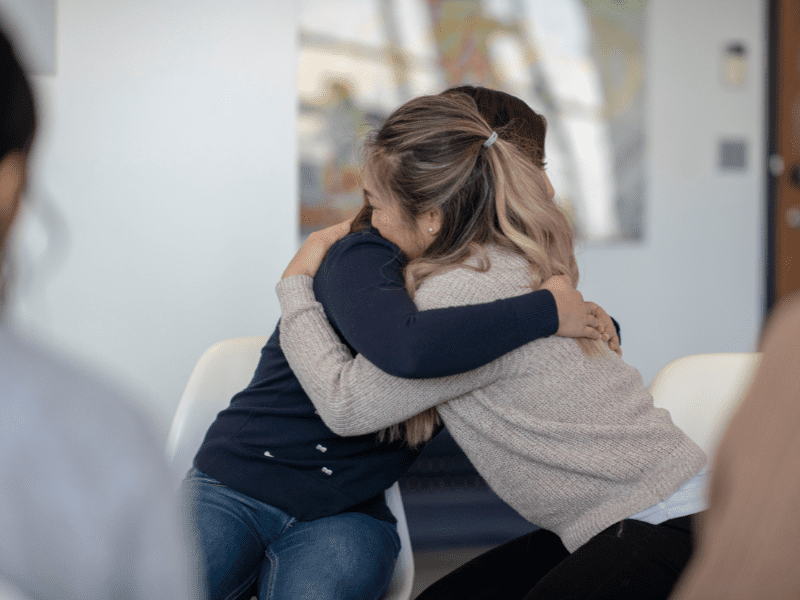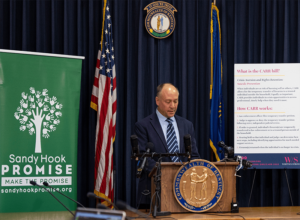Our guest blogger is Stephanie Cinque, MSW, a mental health therapist and expert on community resilience and recovery after a mass shooting. She led a resiliency center in Sandy Hook, Connecticut supporting the community after the Sandy Hook tragedy and other events for more than a decade. Stephanie works with Sandy Hook Promise to support communities in the aftermath of trauma.
Learning from Sandy Hook to Help Other Communities
Eleven years ago, I found myself as a mother of two young children residing in Sandy Hook, where I served as a forensic social worker, offering trauma counseling. However, everything changed dramatically on that tragic December day of the Sandy Hook elementary shooting. The event shattered my community and had a profound impact on my life. In the wake of the devastation and the heart-wrenching loss of 26 innocent lives, including 20 precious children and six adults, I felt an overwhelming urge to utilize my skills and compassion to support my grieving neighbors and initiate the healing process within our community.
As a social worker, I’ve witnessed firsthand the transformative power of human connection and relationships in the healing process. Motivated by this insight, I embarked on a journey to establish a center that serves as an inclusive and centralized hub for individuals seeking solace, community, and mental health support. Little did I anticipate that over a decade later, communities across the nation would continue to grapple with similar tragic events. Nevertheless, Newtown stands as a beacon of resilience, offering guidance and inspiration to communities seeking to navigate the path of healing in the aftermath of such profound tragedies.
Understanding Community Resilience
It’s important to recognize that not every person who lives through a mass shooting and collective trauma will develop psychological distress. Each tragedy is unique, so it’s essential to be sensitive and flexible to adapt to the specific set of circumstances. However, where there is healing, there is hope, and with the right model, communities can heal.
My experience has taught me that resilient communities have strong internal structures. The community and its leaders must be prepared to respond positively to tragedy with intentional communication and cohesive efforts. Strong connections and clear messaging make response efforts more cohesive and effective.
Tragic events like the Sandy Hook school shooting can still divide communities and sever relationships. Recovery from tragedy and building resilience involves acknowledging emotions, seeking support, and taking gradual steps forward. Community connections are pivotal to easing pain and promoting empathy, while collaborating with others to address challenges. Shared activities, support networks, and a focus on a common goal can strengthen community bonds and promote healing.
Nurturing Individual and Community Well-being
A healthy community has healthy individuals who feel a sense of belonging. It is crucial to encourage self-compassion, prioritize mental wellness, and engage in activities that promote healing so that you, along with your community, can reach its full potential.
In any community, diverse experiences and challenges coexist, emphasizing the importance of mutual support and empathy. Whether celebrating joyous occasions or coping with personal struggles, every individual contributes to the fabric of community resilience. We all have a role to play in extending kindness and understanding to one another, fostering healing and connection.
By prioritizing communication and a collective path to healing, communities can overcome divisions and emerge stronger. Encouraging self-compassion and engaging in healing activities fosters community resilience, empowering both individuals and the collective to reach their full potential.
What to Do if Your Community is Affected by a Mass Shooting or Trauma
Establishing a robust support network, whether comprising friends, family, or professionals, is invaluable during the recovery process. Cultivating a sense of purpose and deriving lessons from adversity contribute significantly to the gradual development of resilience. Engaging with other communities that have faced similar challenges can help normalize emotions and events, facilitating a deeper understanding of collective trauma and the path to recovery.
Sadly, in today’s world, the question isn’t if but when another gun violence tragedy will occur. However, with the right individuals, training, and compassion, communities can transcend tragedy, fostering a climate where healing can thrive.
Resources for Community Support
- Sandy Hook Promise’s Know the Signs program overview
- How to help children cope with a gun violence tragedy
- Ways for teens to help stop suicide, suicidal thoughts, and self-harm
- What adults need to know about youth suicide prevention
- 988 Suicide and Crisis Life Life Fact Sheet
- SAMHSA Suicide Crisis Life Line Fact Sheet (Spanish)


